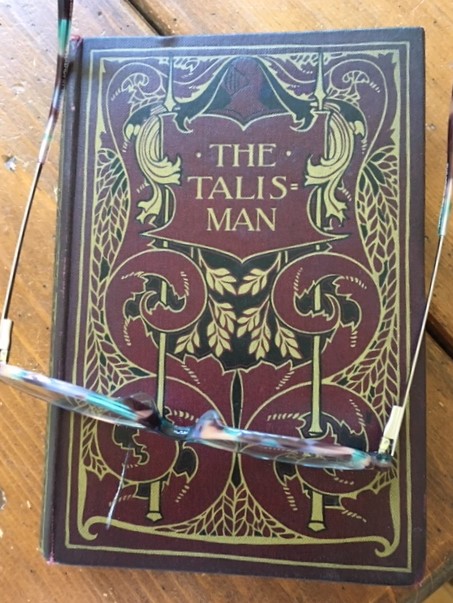The Talisman is one of Sir Walter Scott’s adventure novels set during the Crusades. In terms of how much it’s based in actual history, I would say not much. For one thing, Scott has bought the myth of the Knights Templar being evil and makes the Templar Grand Master the villain of this novel. However, my 1907 edition of the novel is being marketed as a boys’ adventure story, so its roots are more in the tradition of the old-fashioned romance, in the medieval sense of the word, than based in actual history. I know very little about the Crusades but enough to have spotted several things that were wrong. However, I also don’t know what sources Scott may have been using for his historical background.
On the crusade with Richard the Lion Heart, Sir Kenneth is a poor Scottish knight of no illustrious family who has fallen in love with Edith Plantagenet, a lady far above his station. King Richard being ill, Sir Kenneth travels to see a holy man and healer whom the court ladies are visiting. While he is there, Edith gives him a sign of her favor.
He returns to the Christian camp bringing Saladin’s doctor with him to cure Richard. Richard is quickly cured and almost immediately gets involved in a dispute about his banner. The jealous Austrian Duke has placed his banner next to Richard’s and Richard is furious. He removes the Duke’s banner quite rudely and orders Sir Kenneth to guard his own.
Sir Kenneth is guarding the banner when he receives a message from Lady Edith asking him to come to her immediately. At first, he refuses, but then he thinks this may be his only chance to see her, and he will be gone only a few minutes. He decides to leave his dog to guard the banner. But when he arrives, he finds out that Queen Berengaria has summoned him in Edith’s name as part of a bet and a joke. Kenneth returns to his post to find the banner gone and his dog wounded. Now he’s in big trouble for disobeying orders.
Aside from this silly plot, there is also the one where King Richard’s Christian rivals are plotting against him. Eventually, they send an assassin after him.
This novel is a farrago of nonsense that just gets sillier as it goes on, and it is also written very floridly, combining archaic-sounding speeches with the flowery, elaborate speech of the East. Interestingly enough, Scott was heavily criticized for inventing a Plantagenet (Edith) but not for the more egregious historical errors in this novel. It is not Scott at his best.
Related Posts
The Templars: The Rise and Spectacular Fall of God’s Holy Warriors


